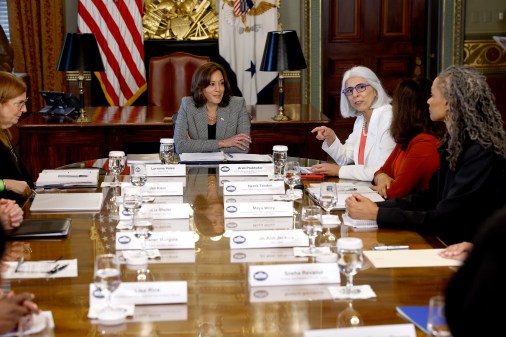Why Congress should back a stopgap commercial drone bill
Warning: Due to a slow-moving regulatory process, the U.S. commercial drone industry is rapidly losing altitude while other countries soar ahead.
The Federal Aviation Administration has begun to develop the rules necessary to integrate small unmanned systems into U.S. airspace, but it has already conceded that it will miss its September 2015 deadline, and now the Government Accountability Office predicts that we cannot expect to completely integrate commercial drones into America’s skies until 2017 or later. In the meantime, the lack of concrete rules has put U.S. companies at a distinct disadvantage compared to their foreign competitors, so some have started moving their operations abroad.
That is bad news for U.S. leadership in an important field of cutting-edge technology. The Commercial UAS Modernization Act, sponsored by Sen. Cory Booker, D-N.J., would address this issue by creating a useful stopgap that would allow commercial drone operations until the FAA delivers a final rule.
There are a number of negative effects that have resulted in the FAA’s slow and deliberate rulemaking pace. First and foremost is the loss of competitiveness in UAS technology to other countries with more permissive rules. It is telling that when compared to the relative size of its economy, Canada has 92 times as many commercial drone operators as the United States. Second, by limiting commercial UAS activity to special exemptions, the FAA has significantly limited the testing of this technology. For example, Amazon got approval to test its drones in Canada in three weeks, while the FAA took six months to approve an obsolete model. While the FAA quickly approved the updated model when faced with criticism, the current set of restrictions means companies cannot rapidly tweak and improve their drones, a process that is integral for development of the technology.
If enacted, the Commercial UAS Modernization Act will help curtail these issues. This legislation would mostly set the rules as they would be if the FAA adopted its initial proposal, including prohibitions on operations beyond line of sight, operations above 500 feet, and operations at night. While these rules will hopefully change to allow for more flexibility, establishing safe rules now rather than later will allow the U.S. drone industry to grow.
In addition, the act contains an important research and development component. It requires the FAA to work with the William J. Hughes Technical Center — a U.S. aviation test facility — to run tests and collect data on a variety of different UAS operations that would not be allowed by the FAA’s proposed rules, such as detect-and-avoid systems, autonomous systems, and beyond-line-of-sight operations. This program will further expedite commercial drone integration of these prohibited activities by allowing the FAA to identify safety standards and develop milestones for these operations. The act would also require the FAA to partner with NASA to research and develop an air traffic control system for UAS flying under 1,200 feet.
By creating a safe approval system now and allowing for commercial UAS testing, Congress would spur the continued development of the commercial UAS industry while more flexible rules are being developed. Opening the door to commercial use of this technology will also allow drone makers to continue to innovate and test their products, preserving competitiveness in the U.S. drone industry during the interim. Furthermore, this forward-looking legislation would actually speed along the regulatory process by improving research and development for UAS operations where the FAA needs additional data to rule on its safety.
It is important to note that the FAA is open to changes, as it has publicly stated its commitment to rethinking its hardline stance on operations beyond line of sight, which were prohibited in the original proposed rules (and the Commercial UAS Modernization Act). The FAA has also signaled a shift in its stance towards currently prohibited operations, such as package delivery. But while the FAA continues to deliberate, Congress should pass the Commercial UAS Modernization Act and allow limited commercial use of drones to promote U.S. competitiveness and innovation in drone technology.
Alan McQuinn is a research assistant at the Information Technology and Innovation Foundation.






